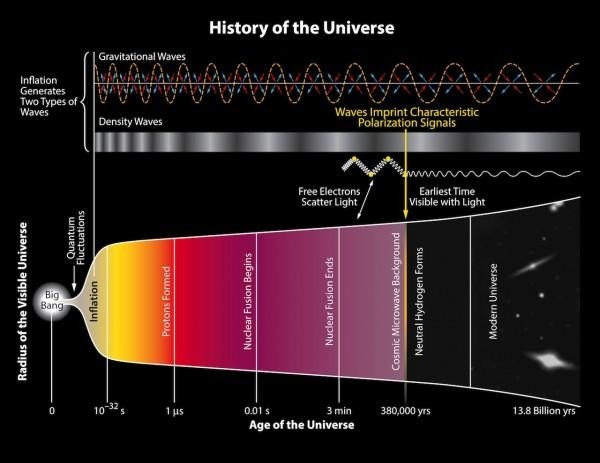Big Bang Echoes Just Cosmic Dust BICEP2 Investigation Finds
It was supposed to be evidence of the first shudderings of the universe, a post-Big Bang ripple of cosmic inflation finally spotted by the BICEP2 telescope, but scientists have finally admitted they got it wrong. The unexpected announcement last March that researchers had identified primordial gravitational waves they believed dated back to the moments right after the formation of the universe had led to suggestions that the US team responsible could win a Nobel Prize. Now, though, the European Space Agency has confirmed that what was thought to be a huge cosmic discovery from a trillionth of a trillionth of a trillionth of a second, all of fourteen billion years ago, was in fact just dust.
Chatter of a serious turnaround in the conclusions surfaced late yesterday, when what appeared to be a copy of the official investigation was prematurely posted. Those documents were promptly pulled, but the ESA has now confirmed that its contents were accurate.
"Despite earlier reports of a possible detection, a joint analysis of data from ESA's Planck satellite and the ground-based BICEP2 and Keck Array experiments has found no conclusive evidence of primordial gravitational waves," the ESA said today.

Signs that there may have been a mistake began not long after the initial announcements, with dust emissions blamed for potentially confusing the results. The BICEP2 team had picked an area for observation with the telescope that was believed to be relatively low on galactic dust – which can lead to the same curly B-modes in polarization originally believed to be the result of the big bang ripples – but subsequent surveys suggested that wasn't necessarily the case.
In fact, in the intervening months the Planck and BICEP2 teams have worked together, including using freshly-released data from the Keck Array, to fact-check just how dust-free that area was.
"This joint work has shown that the detection of primordial B-modes is no longer robust once the emission from Galactic dust is removed," Jean-Loup Puget, principal investigator of the HFI instrument on Planck at the Institut d'Astrophysique Spatiale in Orsay, France, admitted today. "So, unfortunately, we have not been able to confirm that the signal is an imprint of cosmic inflation."
The data produced by the investigation will be released publicly next week, while the teams' findings will be published in Physical Review Letters.
Although it's bad news for anyone on the BICEP2 project who had cleared a space above the fireplace for a Nobel prize, the researchers are keen to highlight that it's not the end for any of the cosmic wave theories. In fact, the joint study has set more precise identification limits on such waves, with a new maximum figure established.
"The new upper limit on the signal due to gravitational waves agrees well with the upper limit that we obtained earlier with Planck using the temperature fluctuations of the CMB," Brendan Crill of the NASA Jet Propulsion Lab – and a member of both Planck and BICEP2 teams – said. "The gravitational wave signal could still be there, and the search is definitely on."
SOURCE ESA
